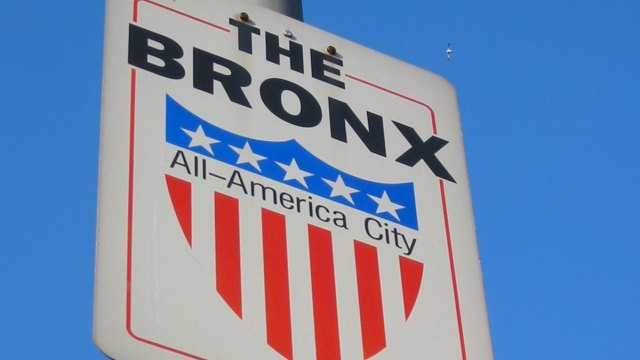5 Hispanic Student Recruitment Strategies That Win

According to a Pew Research study, In 2014, 35% of Hispanics ages 18 to 24 were enrolled in a two- or four-year college, up from 22% in 1993 or an increase of 2.3 million Hispanic college students. During this time, blacks increased 8% and whites only 5%. According to the Hispanic Federation and Nielsen, nearly 1.2 million Latinos have at least some college education and nearly one million reported being high school graduates. If it's true that 1 in 6 Americans in this country is now Latino, competing to educate them should be one of your top priorities. Here are 5 keys to effective Hispanic student recruitment.
Education is Not a Personal Decision
Hispanics are more likely than any other demographic to be living at home in a multi-generational household. Family is everything. They’re easily persuaded by family when it comes to their purchasing decisions and value spending time with their children over everything. A study conducted by The Postsecondary National Policy Institute revealed that 48 percent of Hispanic students were first-generation students, compared to 28 percent of whites. College for Hispanics is still, generational speaking, a new concept. For the Latino family, it's often a culmination of years of hard work and sacrifice and the decision-making process is not to be taken lightly. It's one that's met with much trepidation. As such, it's often these multi-generational households that collectively make this decision, which introduces several uncommon influencing factors not seen in the traditional student.
Ultimately, the decision is based on how it will affect the household. Is the prospective student's income vital to paying the bills? Are they a primary caretaker of an aging relative? Are they responsible for watching the younger children or cleaning the house? These are all very real barriers to entry. While one might think future gains might be an incentive, the effects on the household in the present take priority. Consider a strategy that engages not only the prospective student but also the family. Open House events should be family friendly. While students are often fluent in English, parents and older relatives tend to speak little or no English. Consider hosting Spanish recruitment events and reserving physical space in the admissions department that accommodates a large family. While it's the student's education, they'll often defer to elders when asking questions and sharing concerns.
Elevate the Cultural Experience
Perspective is incredibly important in Hispanic student recruitment. Seeing the process through their lens and experience is key. For Hispanics, the educational experience is on par with the scholastic. While academics certainly are going to be a leading factor for the aforementioned decision-making unit, access to ethnocentric amenities, proximity to home and communication with loved ones are sure to be concerned that will need to be addressed. However, don't forget the importance of your institution's student life. Hispanic college students are very active in extracurricular activities. Equally as important is the cultural experience. Is the food, music and culture representative of what they're used to. Latino families are very close-knit and they want to make sure their sons and daughters that go off to college don't go without or lose touch with the cultural experience. Consider infusing more authentic Latin cuisine in cafeteria menus, welcoming historically Hispanic fraternities and sororities and highlighting them as your competitive advantage.
Hispanics are Fiscally Conservative
Hispanics are significantly less likely than other groups to have student debt. About 22% of young Hispanic households have student loans. The share is nearly twice as high among young white households (42%) and young black households (40%). Latinos are less likely to use credit or loans including student loans. College buying decisions are often based on what they can pay for in cash. As a result, Latinos are more likely than others to attend community colleges, which generally have lower tuition than four-year schools or decline to pursue a degree altogether. Historically, this phenomenon has created the perception that Hispanics are less qualified for 4-year state and pricier private institutions. This is actually not true and could provide you a competitive recruitment advantage. This fallacy has left a rich pool of would-be applicants that need the right incentive and solution. Consider leading with scholarship offerings above all features and benefits. Over communicate the difference between grants and loans. Remember, those influencing buying decisions at home are often unfamiliar with the enrollment process. Create Spanish language collateral that empowers Latino prospects to educate their family about the benefits of college and how to afford it.
Consider the Non-traditional
Non-traditional students are growing in this country at an exponential rate and Hispanics are comprising of a great percentage of them. As previously discussed, Hispanic aversion to loans means they're more likely to classify as non-traditional, prioritizing income often ahead of education. Balancing life and school is the norm for Latino college students. This provides many clues on where to find them. Consider partnering with some of the larger employers in close proximity to the school. Think about providing skills training and certificate programs that can assist local full-time employees and entice them to consider pursuing a college education as a professional tool for advancement. Highbrid conducted one such program that is outlined in this case study.
The Art of the Deal
Whether clipping coupons or making large purchases, Hispanics, by nature are always in the hunt for a great deal. According to a Viant survey, 92% of Hispanics report they make buying decisions based their ability to use a coupon. This comes from the long traditions of the "old country" where no price was fixed and haggling in the marketplace was expected. Value creation, even if only in perception, is not to be discounted (no pun intended) when recruiting Hispanic students. Its vital that your recruitment strategy considers it through their lens. For most prospective Hispanic students, selecting a college is not unlike another shopping experience, albeit perhaps one of the most important. Now I know you're probably cringing reading this with visions of a tuition red tag sale. This would fly in the face of history and tradition at many of our nation's top institutions. However, consider how to use tools like application fee waivers, free or enhanced meal plans, upgraded housing to build value instead of discounts. Empower your admissions departments to use these as incentives to close the prospect. Allowing the prospective student to feel like they negotiated a better deal will help you recruit more and better quality, Hispanic students.
Hispanic student recruitment is not new but historically has been overlooked by most colleges and universities. As the demographic chemistry of American communities continues to shift, so will the diversity at the college level. With declining or slow growth in the traditional student population, your recruitment campaign can't just acknowledge the Hispanic Student it must actively recruit them.
Share this
You May Also Like
These Related Stories
Hispanic Student Recruitment Of Fiscally Conservative Family


Hispanic Student Recruitment Of Fiscally Conservative Family
August 22, 2018
5
min read
Top 5 Secrets To Online Student Recruitment


Top 5 Secrets To Online Student Recruitment
April 19, 2017
5
min read
5 Uniquely Bronx Student Recruitment Tactics


5 Uniquely Bronx Student Recruitment Tactics
April 11, 2017
4
min read


